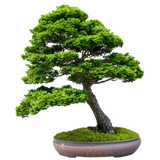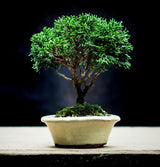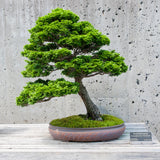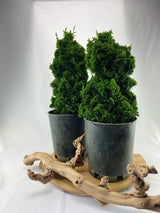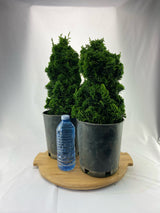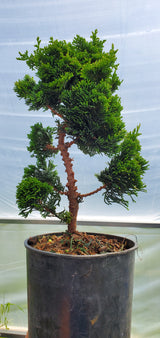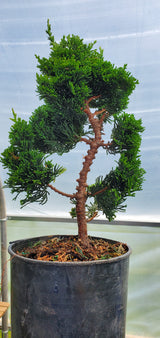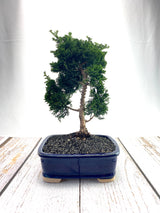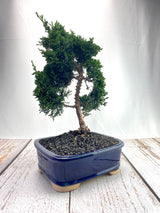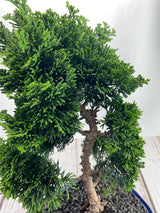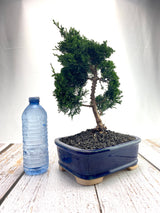Hinoki Cypress:(Chamaecyparis obtusa), also commonly known as a false cypress or Japanese Cypress because they do not belong to the cypress family of trees, is a renowned variety for Bonsai. Hinoki Cypress is a very unique and rewarding species grown as Bonsai. Its dense growth habit and fern-like tight foliage make this a unique tree with a special character.
Our Hinoki Cypresses are the highly desirable dwarf Thowiel cultivar.
Although this is not a tree recommended for beginners, it is definitely a show stopper. We would not recommend the Hinoki Cypress to someone just starting out in Bonsai, but instead to Bonsai Enthusiasts with a few trees under their belt.
BONSAI CARE
The Hinoki Cypress needs full sun and can be placed anywhere in the garden, but it must be outside until the temperature drops below freezing. Being in a pot, the Hinoki Cypress will require winterizing, and unlike many other varieties, it will still require light. So it should be placed in an unheated greenhouse or sunny enclosed porch for the winter.
Watering:
- Hinoki Cypress drinks up a lot of water and should be watered often during warmer weather. This is why having well-draining soil is essential to prevent root rot.
Training:
-
Pruning: Hinoki Cypress should be pinched when new shoots reach 3cm. Pinching will prevent the browning of the needles, which can happen when using scissors. Pruning secondary branches should be done in the spring, and pinching can be done throughout the growing season.
-
Wiring: This is a challenge as wiring must be done carefully so as not to trap any needles under the wire. The Hinoki Cypress branches take a long time to set, but the wire should not be kept on for more than 8-10 months. Rewiring branches after they had a break is recommended.
-
Repotting: Hinoki Cypress need to be repotted every other year during development. During refinement, repotting can be done every 3-5 years, depending on the size of the pot. The best soil for Hinoki Cypress is just Akadama.
PRODUCT DETAILS
YOUNG: 10"-14" tall, comes in a 6" grower's pot.
Mature: 12"-16" tall, comes in a 8" Handmade Ceramic Bonsai pot
These are not seeds - But an Actual Living Bonsai Tree.
Please see our Choosing a Bonsai page for the age and dimensions regarding the different stages of our Bonsai (Baby, Young, & Mature).












